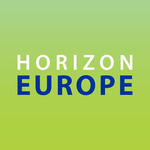The pelvic floor supports pelvic organs with muscles and ligaments in the lower pelvis. Pelvic tissues, like any living tissue, change in physical properties during lifetime and can undergo dysfunctions commonly known as Pelvic Floor Disorders (PFDs). The prevalence of at least one form of PFD (pelvic pain, pelvic organ prolapses, urinary or anal incontinence, dyspareunia) has been reported to be as high as 32% among females and 16% among males worldwide. Various factors such as older age, menopause, obesity, connective tissue disorders, or physical activity are significant contributors . However, the occurrence of PFDs is mainly due to traumatic events. Indeed, perineal tears, taking place in 90% of vaginal deliveries (VDs), have been identified to be a high-risk factor of PFDs.
In PELVITRACK, we will develop the first-ever solution to predict pelvic floor tearing. This involves a comprehensive selection and testing of various devices and prototype, ensuring their relevance in providing real-time information on perineal health. To achieve this objective, we will rely on medical devices which are currently utilized inside gynecology and obstetrics (such as Shear Wave Elastography (SWE)) or which are compatible with the specific conditions of gynecology and obstetrics (such as InfraRed thermography (IR), surface ElectroMyoGraphy (sEMG), suction, and optic methods (colorimetry, DIC)). We will also use an indentation device currently under development by IMT for measuring the mechanical response of soft tissues. These IDEVs (Investigated DEVices) will include both contactless and contact-based modalities ensuring minimal invasiveness regardless of the scenario. All these devices will be benchmarked on controlled stretched perineum and perineal tissues ex vivo from pig models, chosen for their availability as byproducts in slaughterhouses, eliminating the need for specifically slaughtering animals.


